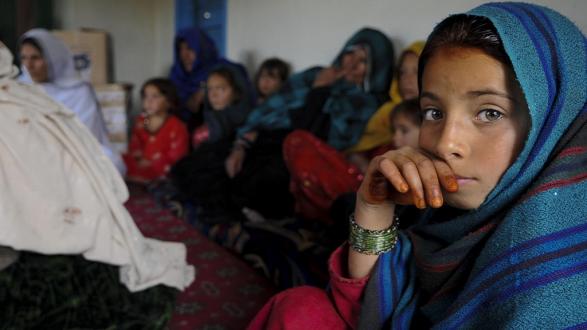For a war-torn country like Afghanistan, where a fresh wave of Taliban attacks in the last month alone left scores of civilians dead and the capital still grieving, renewing peace negotiations with anti-government groups seems like it would be welcome news. However, that depends on who you ask, and where you sit at the negotiation table.
According to The Asia Foundation’s latest Survey of the Afghan People, fewer than half (47%) of Afghan women believe that peace with the Taliban is possible, compared to nearly 60 percent of men. Not surprisingly, the survey also reveals that women are more likely (77%) than men (68%) to experience fear when encountering Taliban.
Fear for personal safety and security has increased significantly among Afghan women over the last four years: from 65 percent in 2013 to 74 percent in 2017. Women who reported they always fear for their safety and security are more likely to report that peace with the Taliban is impossible (55%) compared to those who reported they never experience fear (43%).
While the reasons for the rise in pessimism range, they can likely be attributed to the drawdown of foreign troops, and with it, a greater sense of insecurity, and the simultaneous resurgence of Taliban power across the country.
While the reasons for the rise in pessimism range, they can likely be attributed to the drawdown of foreign troops, and with it, a greater sense of insecurity, and the simultaneous resurgence of Taliban power across the country. A recent BBC study found that Taliban fighters now threaten 70 percent of the country. When the Northern Province of Kunduz fell to the Taliban in 2015, they made a point of destroying women’s services like shelters for the abused and women-run radio stations. There were also allegations of rape at the women’s prison and university dormitory.
It’s no wonder, then, that women, who suffered the most under Taliban rule and are still at the forefronts of insurgency, are skeptical of negotiations. The pessimism no doubt reflects a fear of return to the dark days before the Taliban fell in late 2001, when women under the Taliban regime were executed and stoned in public, beaten if seen without a burqa, not allowed to leave the house without a male companion, and lacked even the most basic freedom and rights.
According to research from the Council on Foreign Relations, when women participate in a peace process, the resulting agreement is 35 percent more likely to last at least 15 years. Fifteen years after the UN adopted Security Council resolution 1325 in 2000, which called for women’s full participation in peace talks, in 2015 the government of Afghanistan presented its own National Action Plan to implement Resolution 1325, with the broad goal of ensuring women’s effective political participation including in the peace process. However, implementation of the plan has been slow, and women are still underrepresented in peace processes, government institutions, and the workplace.
If the government moves forward without the inclusion and strong participation of Afghan women at the negotiating table, their hard-earned rights and freedom risk being lost.
Since the fall of the Taliban in 2001 and the billions spent by the international community on advancing women’s rights, women’s lives in Afghanistan have changed dramatically. Women have gone back to work again, families send their daughters back to school, and today millions of girls attend schools and universities across the country. They hold positions as cabinet ministers and members of parliament-women now make up 28 percent of parliament.
Early this month, President Ashraf Ghani raised the possibility of reconciliation with the Taliban, saying that his government was “open to peace talks with armed groups who accept peace.” However, if the government moves forward without the inclusion and strong participation of Afghan women at the negotiating table, their hard-earned rights and freedom risk being lost.
_______________________
Mohammad Shoaib Haidary is The Asia Foundation’s policy and research data analysis trainer in Afghanistan. The views and opinions expressed here are those of the author and not those of The Asia Foundation or its funders.
This article was originally published by the Asia Foundation.
The views and opinions expressed here are those of the author and do not necessarily reflect the official policy or position of the Pacific Council.




